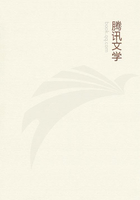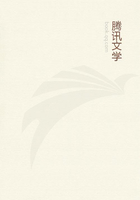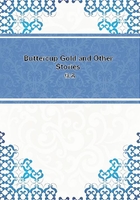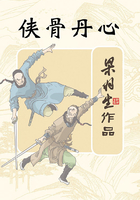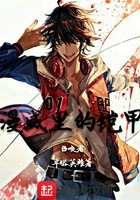Pheidias sculptured other statues of Athene, but none so wonderful as the Athene Parthenos, which, with the Olympian Zeus, was the wonder and admiration of the Greek world. The Athene Parthenos was designed to stand as an outward symbol of the divinity in whose protecting might the city had conquered and grown strong, in whose honor the temple had been built in which this statue was to shine as queen. The Olympian Zeus was the representative of that greater divinity which all Hellas united in honoring. We may gain from the words of Pausanias some idea of the magnificence of this statue, but of its unutterable majesty we can only form faint images in the mind, remembering the strength and grace of the figures of the pediments of the temple at Athens. "Zeus," says Pausanias, "is seated on a throne of ivory and gold; upon his head is laced a garland made in imitation of olive leaves. He bears a Victory in his right hand, also crowned and made in gold and ivory, and holding in her right hand a little fillet. In his left hand the god holds a sceptre, made of all kinds of metals; the bird perched on the tip of the sceptre is an eagle. The shoes of Zeus are also of gold, and of gold his mantle, and underneath this mantle are figures and lilies inlaid."Both the Olympian Zeus and the Athene were of chryselephantine work offering enormous technical difficulties, but in spite of this both showed almost absolute perfection of form united with beauty of intellectual character to represent the godhead incarnate in human substance. These two statues may be taken as the noblest creations of the Greek imagination when directed to the highest objects of its contemplation. The beauty of the Olympian Zeus, according to Quintilian, "added a new element to religion."In the works of art just mentioned the creative force of the Greeks attained its highest success. After the death of Pheidias his methods were carried on in a way by the sculptors who had worked under him and become subject to his influence; but as years went on, with less and less to remind us of the supreme perfection of the master. Among these pupils of Pheidias were Agoracritos and Colotes in Athens, Paionios, and Alcamenes. Of Paionios fortunately one statue survives in regard to which there can be no doubt. The Victory erected to the Olympian Zeus shows a tall goddess, strongly yet gracefully carved, posed forward with her drapery flattened closely against her body in front as if by the wind, and streaming freely behind. The masterpiece of Alcamenes, an Aphrodite, is known only by descriptions. The pediments of the temple at Olympia have been assigned, by tradition, one to Alcamenes, one to Paionios. They are, however, so thoroughly archaic in style that it seems impossible to reconcile them with what we know of the work of the men to whom they are attributed. The group of the eastern front represented the chariot races of Oinomaos and Pelops; that of the western, the struggle of the Centaurs and Lapithae. In the latter the action is extremely violent, only the Apollo in the midst is calm and commanding. In both pediments there are decided approaches to realism.
In Athens, after Pheidias, the greatest sculptures were those used to adorn the Erechtheion. The group of Caryatids, maidens who stand erect and firm, bearing upon their heads the weight of the porch, is justly celebrated as an architectural device. At the same time, the maidens, though thus performing the work of columns, do not lose the grace and charm which naturally belongs to them.
Another post-Pheidian work at Athens was the temple of Nike Apteros, the wingless Victory. The bas-reliefs from this temple, now in the Acropolis Museum at Athens, one representing the Victory stooping to tie her sandal, another, the Victory crowning a trophy, recall the consummate grace of the art of Pheidias, the greatest Greek art.
Agoracritos left behind him works at Athens which in their perfection could scarcely be distinguished from the works of Pheidias himself, none of which have come down to us. But from the time of the Peloponnesian war, the seeds of decay were in the art of Hellas, and they ripened fast. In one direction Callimachus carried refined delicacy and formal perfection to excess; and in the other Demetrios, the portrait sculptor, put by ideal beauty for the striking characteristics of realism. Thus the strict reserve, the earnest simplicity of Pheidias and his contemporaries, were sacrificed sacrificed partly, it is true, to the requirements of a fuller spiritual life, partly to the demands of a wider knowledge and deeper passion. The legitimate effects of sculpture are strictly limited. Sculpture is fitted to express not temporary, accidental feeling, but permanent character; not violent action, but repose. In the great work of the golden age the thought of the artist was happily limited so that the form was adequate to its expression. One single motive was all that he tried to express a motive uncomplicated by details of specific situation, a type of general beauty unmixed with the peculiar suggestions of special and individual emotion.
When the onward impulse led the artist to pass over the severe limits which bounded the thought of the earlier school, he found his medium becoming less adequate to the demands of his more detailed and circumstantial mental conception. The later sculpture, therefore, lacks in some measure the repose and entire assurance of the earlier. The earlier sculpture confines itself to broad, central lines of heroic and divine character, as in the two masterpieces of Pheidias. The latter dealt in great elaboration with the details and elements of the stories and characters that formed its subjects, as in the Niobe group, or the Laocoon, to be mentioned later.
These modern tendencies produced as the greatest artists of the later Greek type Scopas and Praxiteles.


